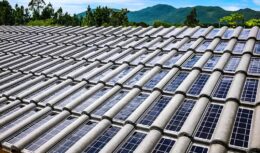
Desert and loss of 2 billion euros: the challenges faced by the largest renewable project. Discover behind the scenes of this journey
The world is witnessing a monumental setback in the ambitious renewable energy scenario. A colossal project, destined to transform paradigms, now seems to be receding on the horizon, leaving behind only deserted expanses and an estimated loss of 2 billion euros. This is a critical moment in the trajectory of humanity in search of an energy transition, where the promise of infinite and renewable energy is confronted with unexpected and discouraging challenges.
In a global context marked by the urgency to reduce dependence on energy sources non-renewable, several initiatives have emerged as bastions of hope, promising a sustainable future based on inexhaustible and clean resources. However, as is characteristic of undertakings of such magnitude, not all paths taken lead to the desired success. Some succumb even before reaching the full extent of their achievement, whether due to financial limitations, insurmountable technical obstacles or conflicts of interest between those involved.
The story of a dream deferred: The technological clash in the desert
It is in this context that the largest solar project planned in Morocco emerged, a promise of vanguard in the generation of renewable energy. The Noor Midelt I plant, with an estimated capacity of 800 MW and a planned investment of 2 billion dollars, emerged as a beacon of hope in a scenario thirsty for sustainable solutions. However, what seemed like a triumphant journey stalled in the face of a crucial impasse: the choice of technology to be used.
The heart of the controversy lay in the dispute between two divergent technologies: CSP (Concentrated Solar Power) and PV (Photovoltaic). While the first offered the advantage of prolonged energy storage, even after sunset, its higher cost made it a less viable option in financial terms. On the other hand, photovoltaic technology, which is more accessible in monetary terms, lacked the ability to maintain energy generation after dusk, which limited its effectiveness in environments with high energy demand.

Behind the scenes of a dispute doomed to stalemate
The clash between defenders of different technologies reverberated in the corridors of Moroccan power, where the Ministry of Energy and the network operator ONEE took an emphatic position in favor of the photovoltaic approach. Faced with this scenario, MASEN, the state energy agency responsible for the project, found itself compelled to reevaluate its strategy, abandoning CSP in favor of PV technology or alternatives based on storage batteries.
Despite the challenges and disagreements, the main actors involved in Morocco's renewable project demonstrate an unwavering commitment to its implementation. EDF Renouvelables, leader of the consortium responsible for the project, reaffirms the country's determination to move forward, investing in a combination of photovoltaic energy, solar thermal energy and battery storage to make the project viable.
The role of international financing in the balance of progress
In a scenario marked by uncertainty and turbulence, financial support from institutions such as the World Bank and the European Investment Bank emerges as a fundamental pillar for the continuity of the project. While negotiations take place behind the scenes, the support of these entities guarantees the stability necessary for the progress of the works, even in the face of the obstacles faced.
Lessons learned: Failure as a springboard to success
As the protagonists of this renewable saga fight their battles in the political, economic and technological fields, it is inevitable to question the mistakes of the past in search of lessons for the future. The case of Noor Ouarzazate, an iconic solar complex in Morocco, serves as a stark reminder of the risks inherent in innovation. However, it is also a testimony to the transformative potential of renewable energy when combined with a pragmatic and resilient vision.
While Morocco's renewable project horizon may have been clouded by storm clouds, there are reasons for optimism and perseverance. In a world thirsty for sustainable solutions, each obstacle overcome is an opportunity to strengthen the foundations of a greener and more resilient future. As the winds of change blow across the desert sands, what seemed like a momentary failure may ultimately prove to be a crucial chapter in the journey to renewable energy.








